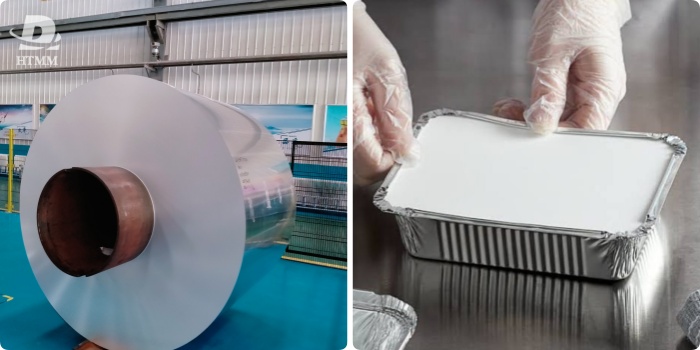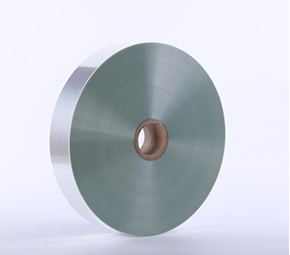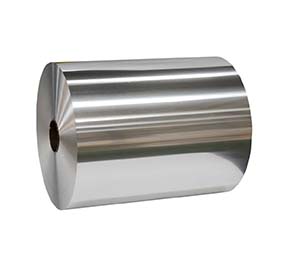
Mixed content
The main difference between 8006 aluminum foil jumbo roll and 3003 rods is their chemical composition. This affects the final properties:
8006 aluminum foil
- Aluminum: 99% by weight base metal.
- Chromium: added 0.1% as an oxygen inhibitor to prevent corrosion.
3003 aluminum foil
- Aluminum: 96-98% by weight
– Manganese: add 1-1.5% to increase strength.
- Magnesium: 0.3-1% helps flexibility during transition.
Manganese makes 3003 hard, so 8006 aluminum foil jumbo roll is softer and more elastic. At the same time, the magnesium content of alloy 3003 is higher. This will increase the freezing efficiency of the 3003.
Production method
Different compounds require different strategies to achieve different target properties:
Alloy 8006: Uses light machining and minimal cold work to achieve very smooth bending properties. Additional annealing restores the stress between the shears and provides greater flexibility. Generally, the factory uses a continuous process of 9-11 steps.
3003: Type 3003 requires intensive cold working to achieve sufficient strength. Low rotation causes partial equilibrium during recrystallization. Features and power system building blocks very efficient with 6-8 stops is enough.
Final specifications will vary by design:
Alloy 8006: Very soft, very elastic, easy to break, good structure, low yield point approx. This can be achieved at 9 kpsi, but by reducing the contact of food with air and steam, a higher growth rate of 40-60% can be achieved in food packaging. If adjusted strictly, the shelf life can be extended.
Alloy 3003: Medium strength, high yield strength 12-16 kpsi, low expansion 15-30%, and maintain reasonable size in some applications. It can increase stability, therefore, ingredient 3003 is suitable for lunch. Due to its high hardness and resistance to deformation, compound 3003 is suitable for nutritional food.
Characteristics
Specific performance benefits can be extended to: Aluminum foil is a versatile packaging material used in many industries. Because it is light weight, it is flexible, effective and has barrier properties. One of its most extensive uses is food packaging and storage. The two most commonly used aluminum sheets in the food packaging market are aluminum sheets 8006 and 3003. Both aluminum sheets have special properties that affect their use. This article provides a detailed comparison of the components, properties, manufacturing methods, characteristics and applications of 8006 and 3003 rods to determine the main differences between these materials.Mixed content
The main difference between 8006 and 3003 rods is their chemical composition. This affects the final properties:
8006
- Aluminum: 99% by weight base metal.
- Chromium: added 0.1% as an oxygen inhibitor to prevent corrosion.
3003
- Aluminum: 96-98% by weight
– Manganese: add 1-1.5% to increase strength.
- Magnesium: 0.3-1% helps flexibility during transition.
Manganese makes 3003 hard, so alloy 8006 is softer and more elastic. At the same time, the magnesium content of alloy 3003 is higher. This will increase the freezing efficiency of the 3003.
Production methods
Different compounds require different strategies to achieve different target properties:
8006 H24 aluminum foil: Uses light machining and minimal cold work to achieve very smooth bending properties. Additional annealing restores the stress between the shears and provides greater flexibility. Generally, the factory uses a continuous process of 9-11 steps.
3003 H24 aluminum foil: Type 3003 requires intensive cold working to achieve sufficient strength. Low rotation causes partial equilibrium during recrystallization. Features and power system building blocks very efficient with 6-8 stops is enough.
Final specifications will vary by design:
8006 H24 aluminum foil: Very soft, very elastic, easy to break, good structure, low yield point approx. This can be achieved at 9 kpsi, but by reducing the contact of food with air and steam, a higher growth rate of 40-60% can be achieved in food packaging. If adjusted strictly, the shelf life can be extended
3003 H24 aluminum foil: Medium strength, high yield strength 12-16 kpsi, low expansion 15-30%, and maintain reasonable size in some applications. It can increase stability, therefore, ingredient 3003 is suitable for lunch. Due to its high hardness and resistance to deformation, compound 3003 is suitable for nutritional food.
Characteristics
Specific performance benefits can extend to:
8006 excels at:
- Packaging irregular items
- Free bending/forming
- Lining demanding surfaces
- Applications utilizing flexibility
3003 Preferred for:
- Self-supporting containers
- Stacking/display rigidity
- Dimensional stability
- Wrinkle/dent resistance
Common applications
Use specialization stems from inherent qualities:
8006 is widely used for:
- Wrap sheets
- Sandwich bag interleaves
- Liners for meats, produce bags
- Cake decorating supplies
- Greaseproof bakery papers
3003 fills roles as:
- Rigid container stock
- Food pail liners
- Semi-rigid lidding films
- Composite component layers
- High-speed converting films
In summary, 8006 and 3003 each carefully tune alloy composition, manufacturing processes, and applications to meet their different needs for extreme folding softness balanced with processability and rigidity. Combining the two expands the toolkit of today’s diverse packaging technologies.
Key Uses for 8006 and 3003 Aluminum Foil
Aluminum foil is widely used in food and pharmaceutical packaging and manufacturing due to its light weight, barrier properties, formability, and cost-effectiveness. In the food grade aluminum foil industry, 8006 and 3003 alloys are two commonly used grades, each with different uses due to their tailored material properties.

Uses for 8006 Aluminum Foil
As the softest commercial aluminum foil, 8006 aluminum foil is known for its flexibility, which enables complex conforming applications:
Food Packaging
- 8006 conforms perfectly to irregular shapes of meat, seafood, cheese, and produce on the shelf, providing a protective barrier for weeks. Its shape-following properties facilitate space-saving retail displays.
Baking Applications
- As a moist bakeware liner, 8006 transfers heat evenly, allowing food to cook evenly without burning delicate items. Its flexibility prevents expansion into oven crevices that could burn food.
Sandwich Wrapping
- Hand-wrapped sandwiches, burritos, and other foods hold their shape securely during transport thanks to 8006's frictionless adhesion, which won't loosen. And its flexibility ensures the foil fits perfectly around the food without causing it to fall apart.
Catering Tray Liners
- 8006 tightly wraps around mixed dish catering trays, keeping their shape even in moist, enclosed environments, preventing cross-contamination during serving.
Flower Arrangements
- Decorative floral displays use 8006's formable and flexible properties to allow for intricate cutting and folding to create complex shapes.
Uses for 3003 Foil
With its balanced strength and workability, 3003 Foil excels in applications that require self-supporting forms:
Food Containers
- As a rigid food packaging material, 3003 provides durability for odd-shaped containers, trays and cups that transfer smoothly from production line to packaging line. 3003 is better suited for soups and better suited for stovetop heating than 8006.
Baking Trays
- 3003 baking and cooking surfaces are dimensionally stable under heat flow, allowing for uniform baking without warping compared to thin gauges.
Lidding Films
- 3003 forms easy-to-peel rigid lids that serve high-speed food processing lines well with its optimized converting characteristics.
Laminated Layers
- A rigid 3003 core or outer layer adds stability to multi-material flexible lidding films, trays and medical device packaging.
Industrial Liners
- 3003's high compressive resistance makes it suitable for use as protective drum and drum liners in demanding industrial environments.

In summary, 8006 and 3003 foils each serve key applications, leveraging their unique mechanical properties tailored through alloy formulations and manufacturing techniques. Both grades meet important demands of modern packaging technology.
Our company HENAN TENDELI METALLURGICAL MATERIALS CO.,LTD manufacture and export food grade aluminum foil since 2009,we have complete production lines and great experience in 8006 alloy and 3003 alloy aluminum foil.We have written this article introducing 8006 and 3003 alloys based on our many years of production experience. We hope it will be helpful to all preson who are new and interested in the food grade aluminum foil.





